
The Plasmodium Consortium
UI/UX
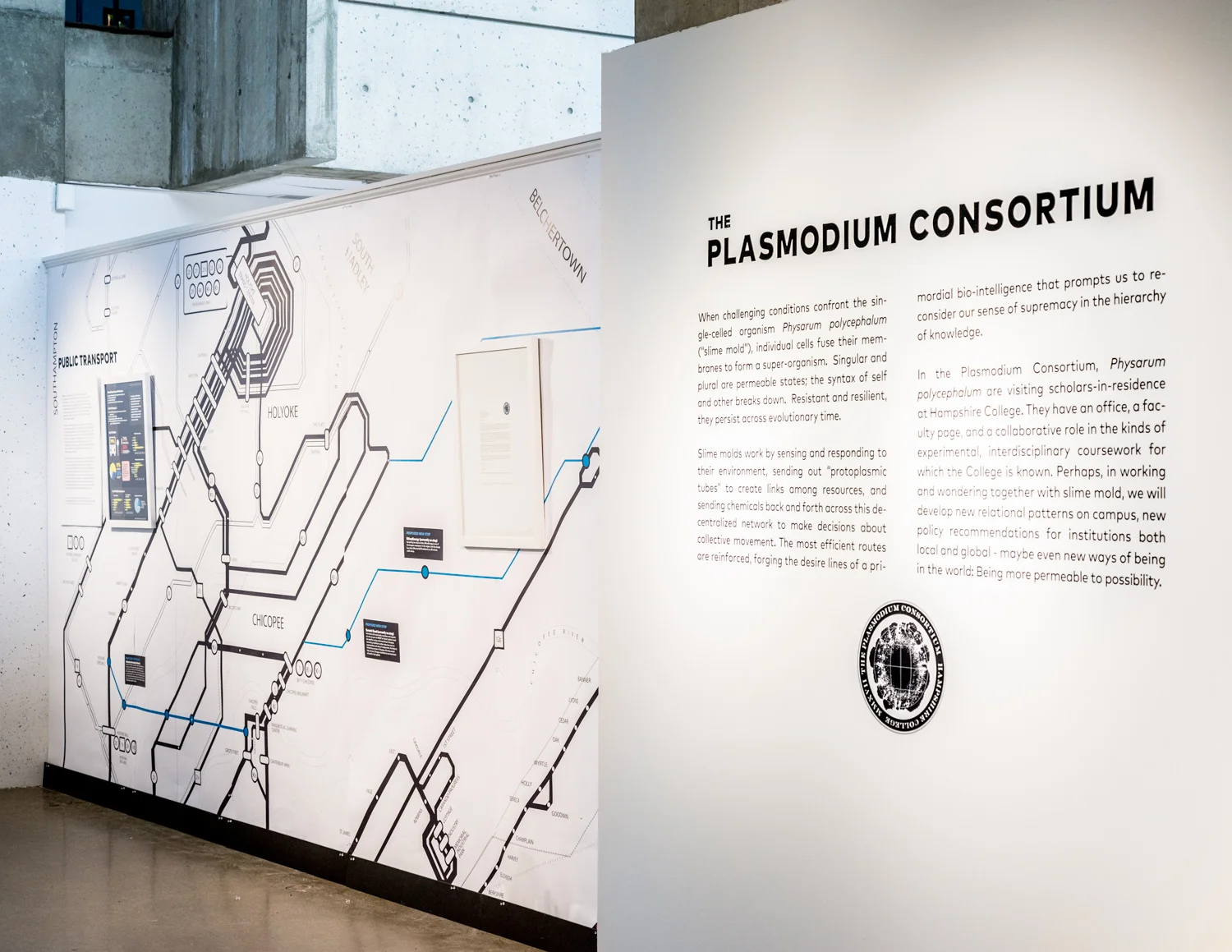
Installation view, The Plasmodium Consortium, with public transport case study
The Plasmodium Consortium
Hampshire College Art Gallery, Project: September 6, 2017 – DECEMBER 5, 2018 / Exhibition: February 9 – March 9, 2018
When challenging conditions confront the single-celled organism Physarum polycephalum (“slime mold”), individual cells fuse their membranes to form a super-organism. Singular and plural are permeable states; the syntax of self and other breaks down. Resistant and resilient, they persist across evolutionary time.
Slime molds work by sensing and responding to their environment, sending out “protoplasmic tubes” to create links among resources, and sending chemicals back and forth across this decentralized network to make decisions about collective movement. The most efficient routes are reinforced, forging the desire lines of a primordial bio-intelligence that prompts us to reconsider our sense of supremacy in the hierarchy of knowledge.
In the Plasmodium Consortium, Physarum polycephalum are visiting scholars-in- residence at Hampshire College. They have an office, a faculty page, and a collaborative role in the kinds of experimental, interdisciplinary coursework for which the College is known. Perhaps, in working and wondering together with slime mold, we will develop new relational patterns on campus, new policy recommendations for institutions both local and global — maybe even new ways of being in the world: Being more permeable to possibility.
Publication: Print and digital Plasmodium Consortium Policy Circular No 1.
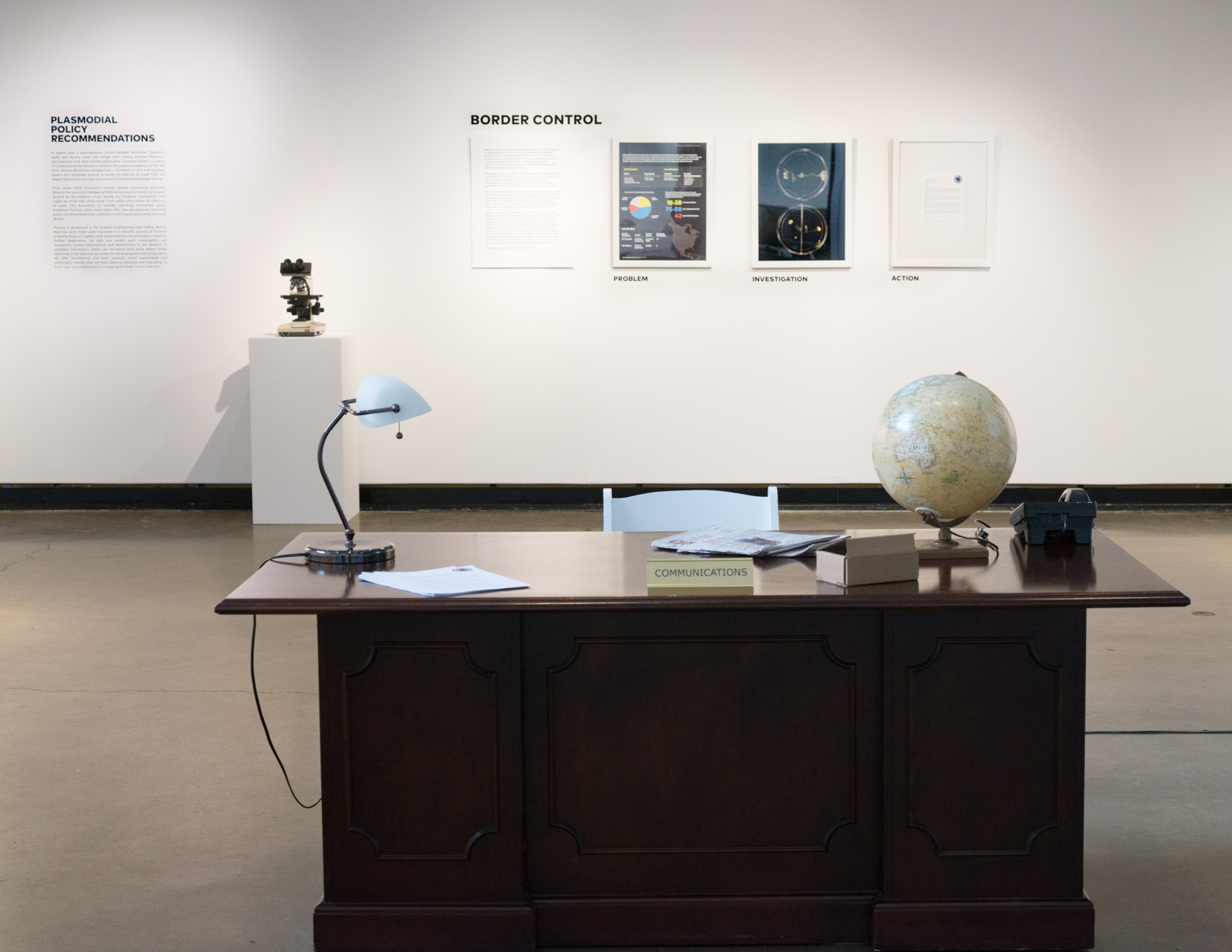

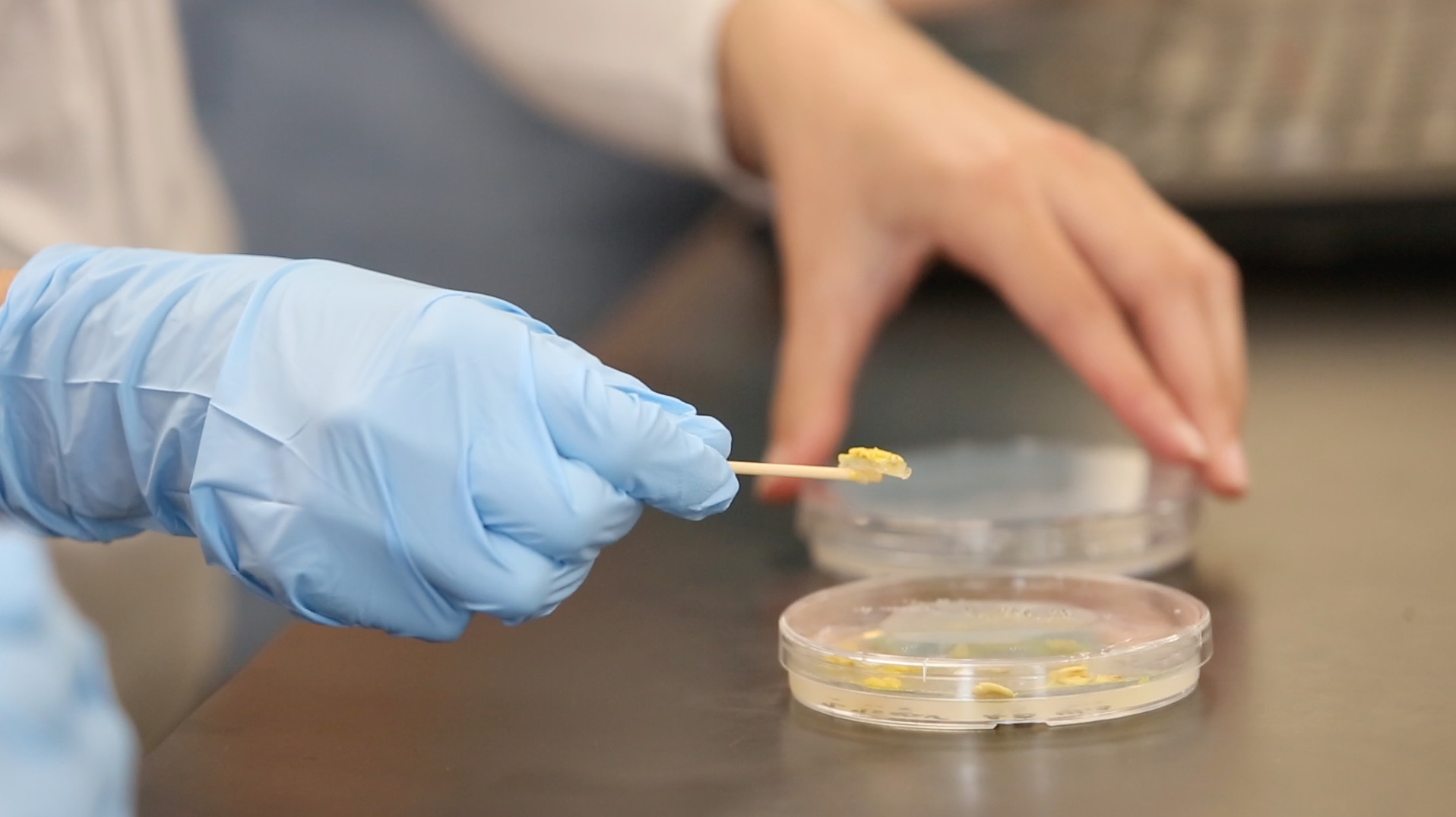
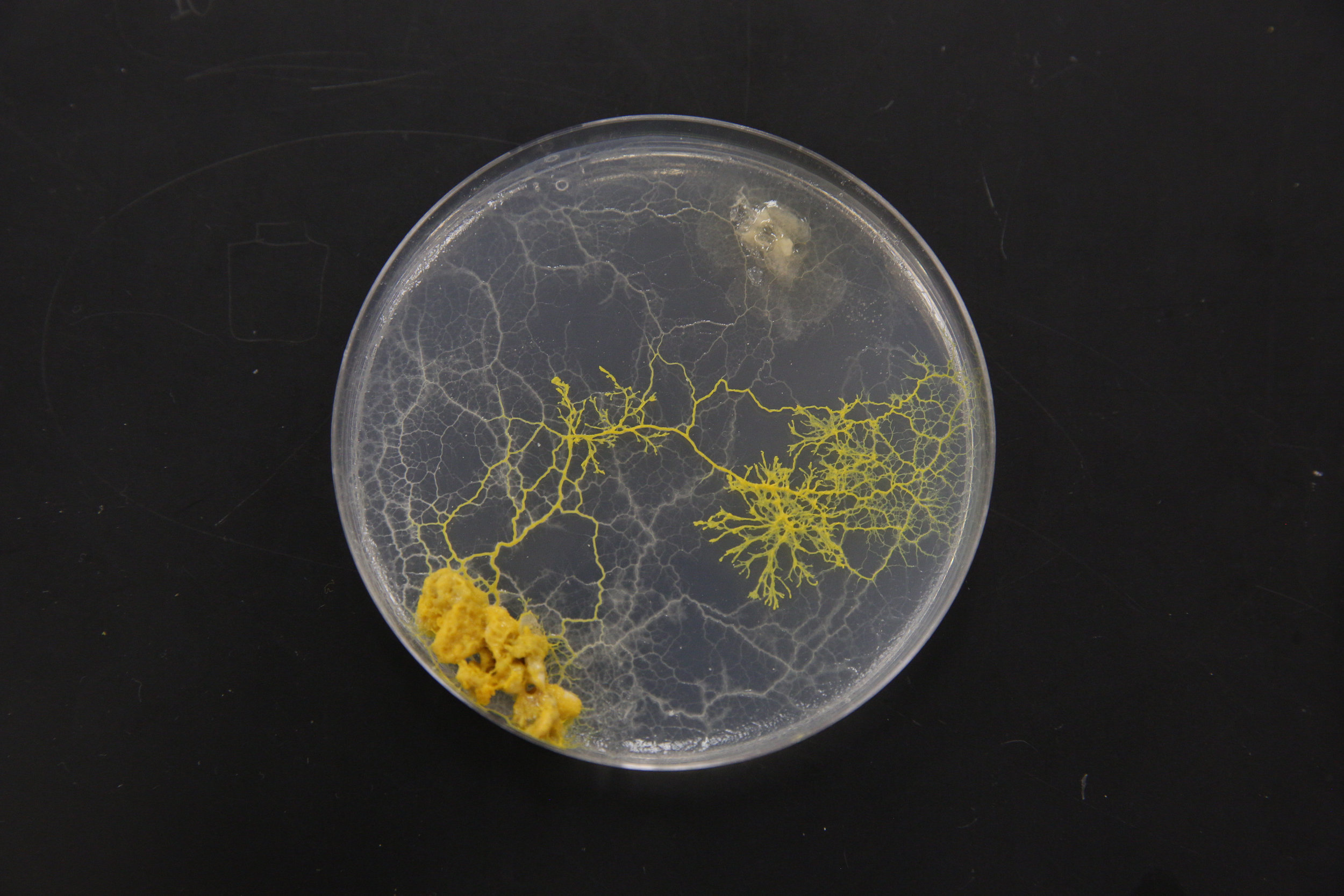
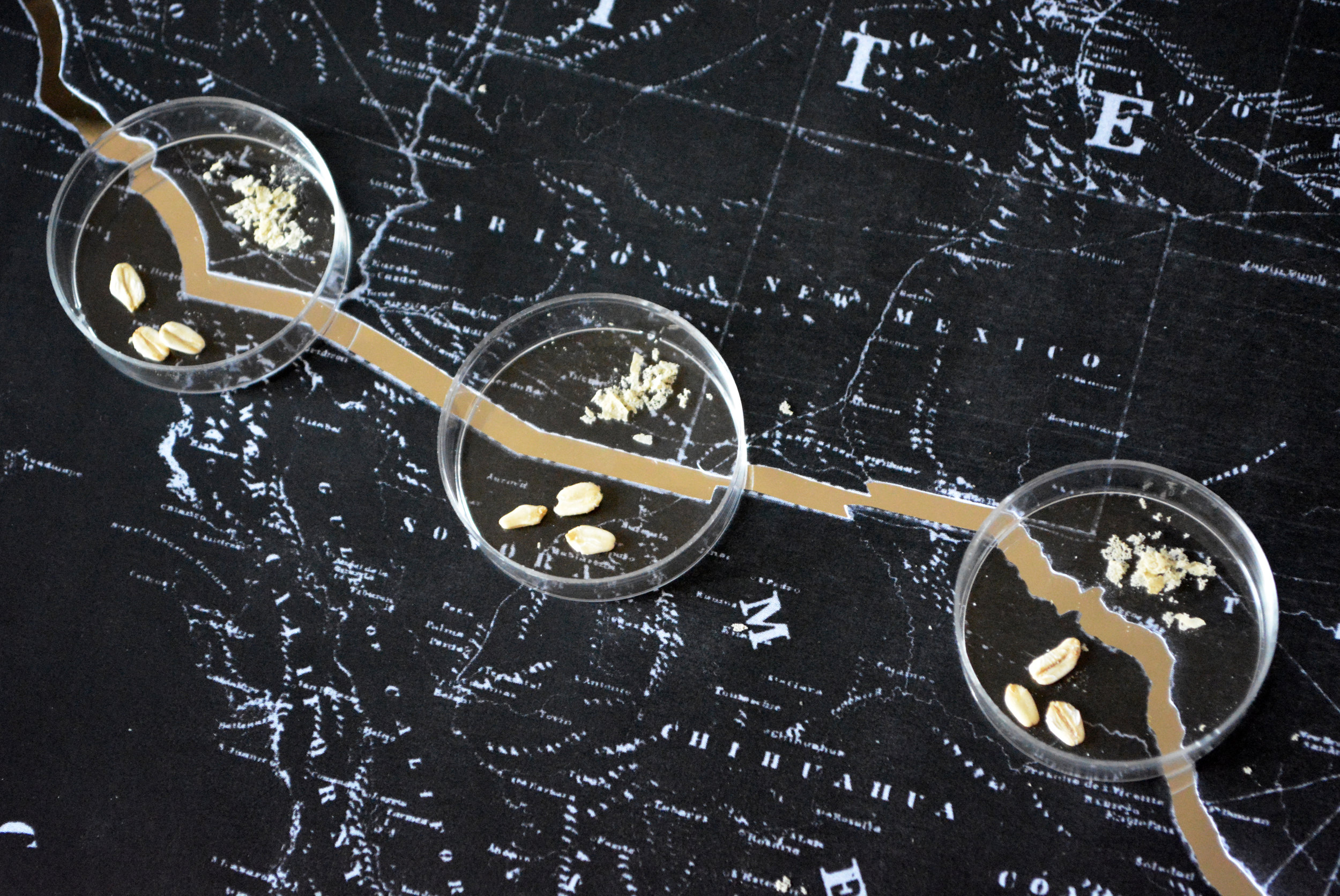
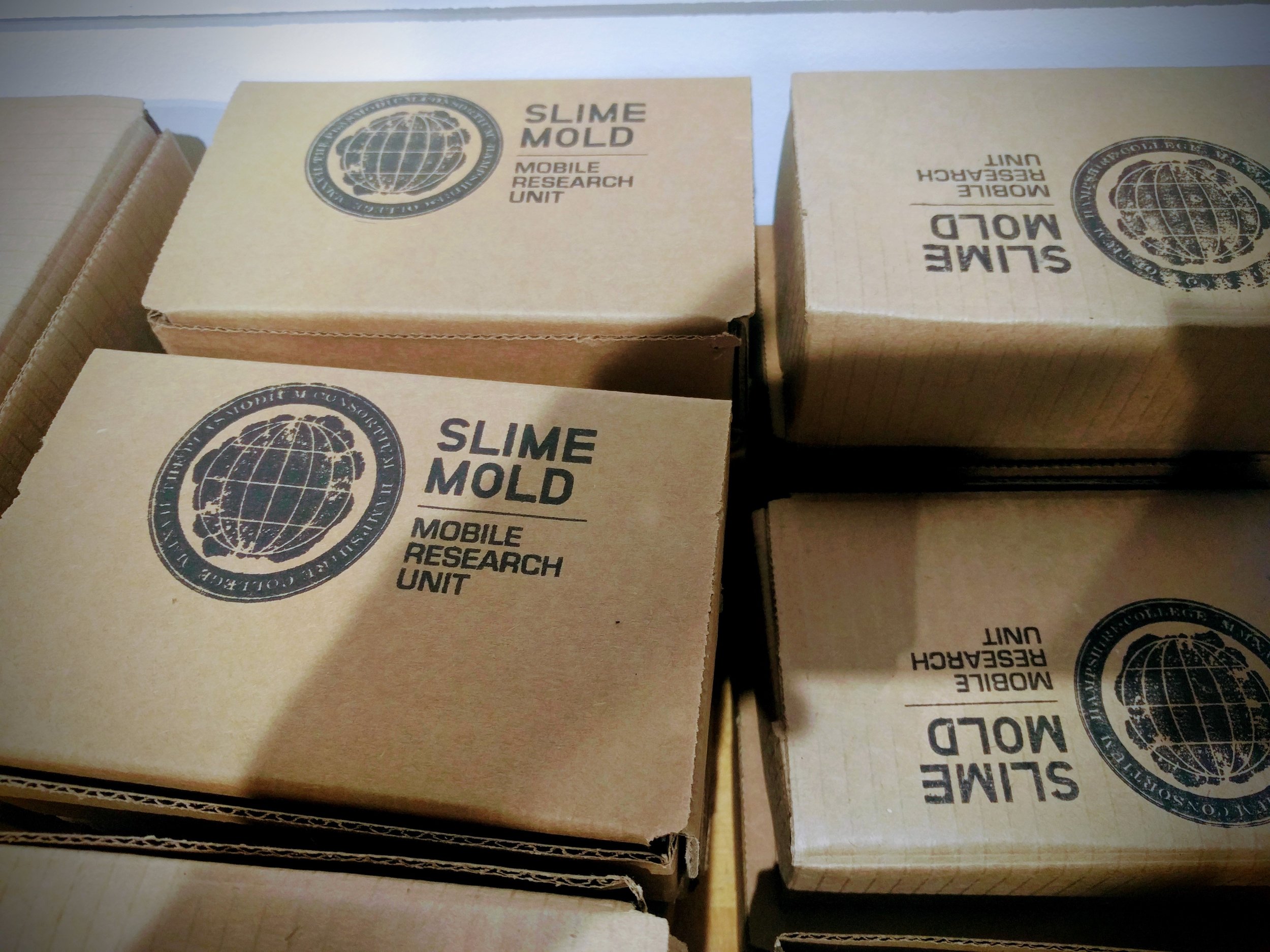
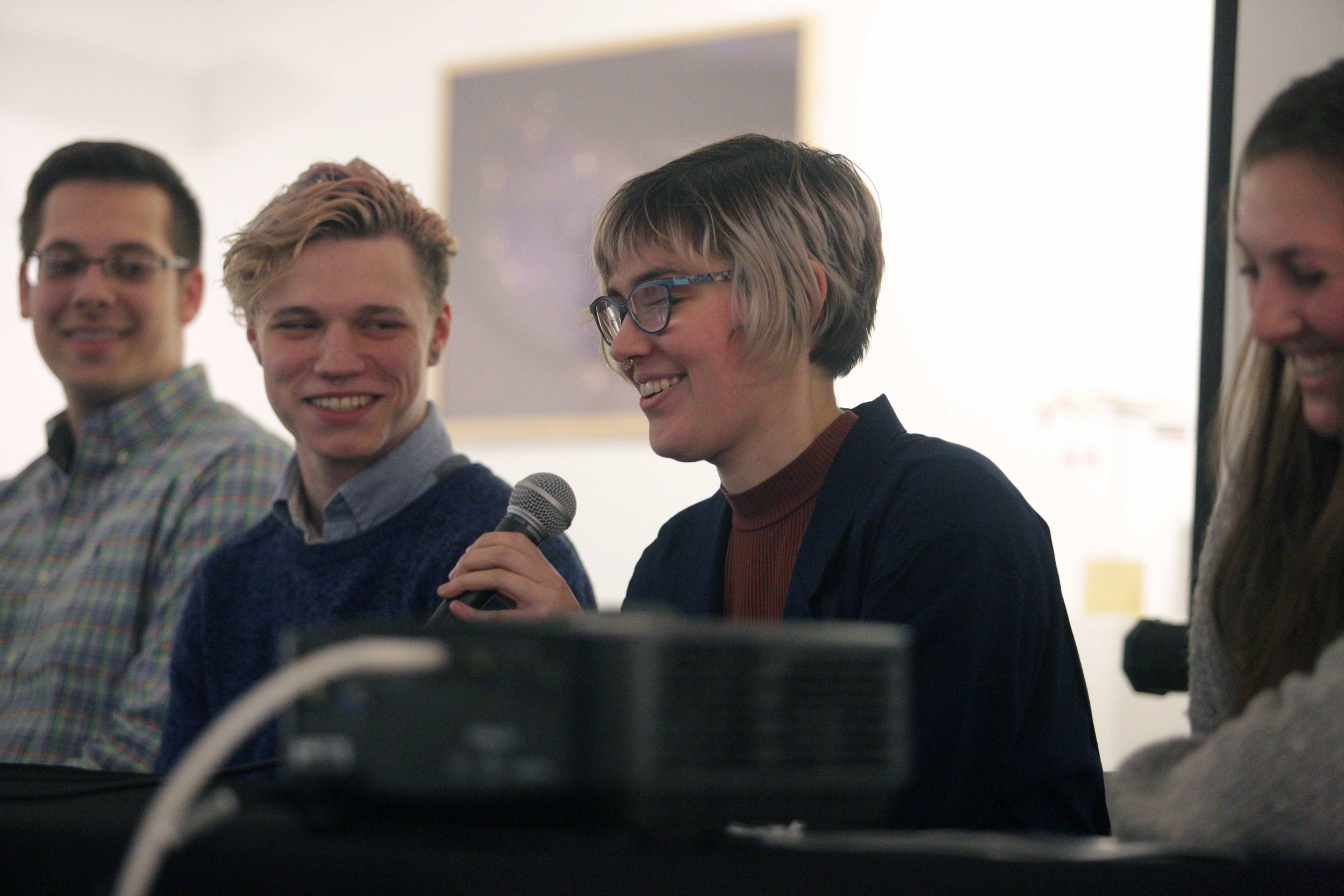
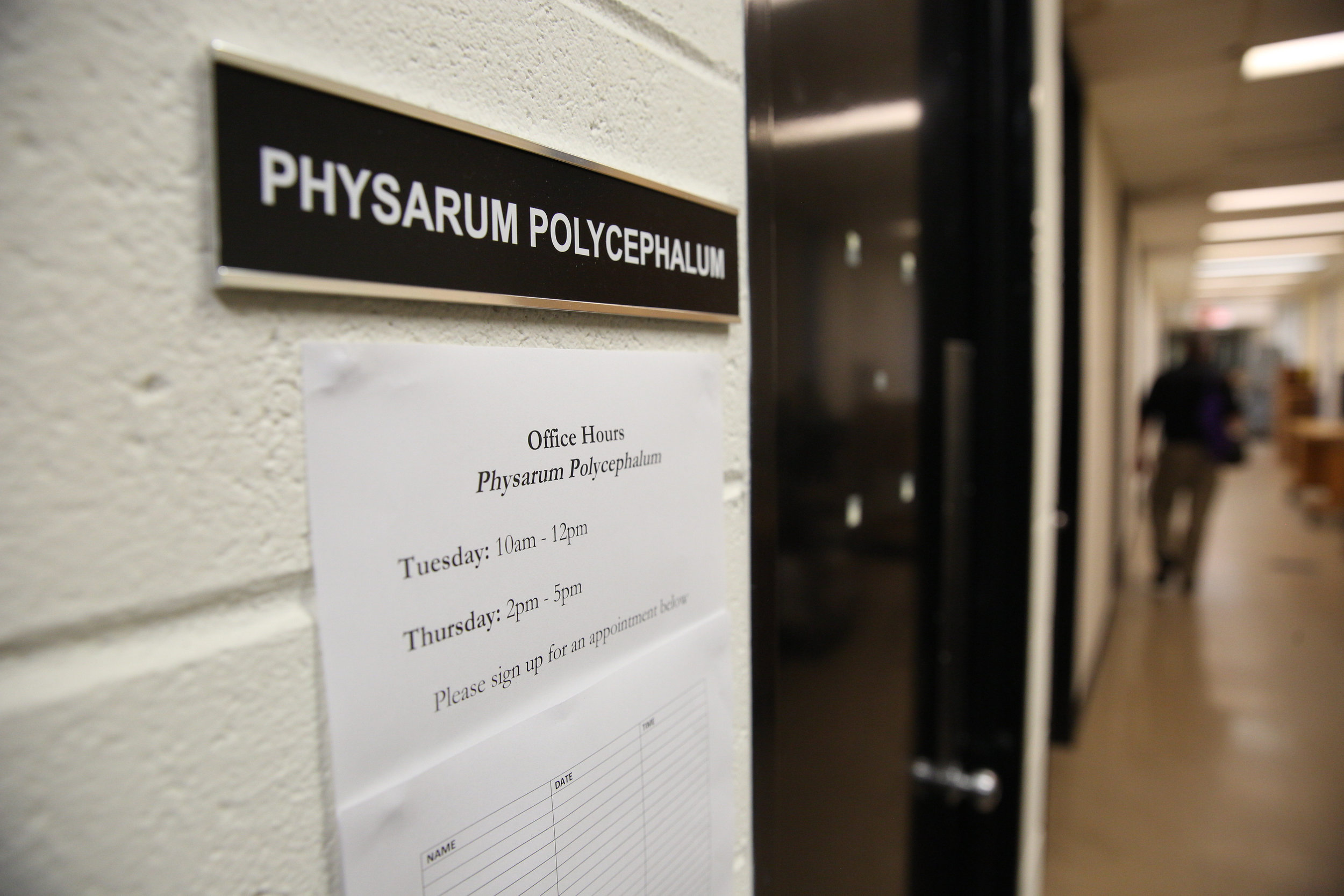
Programs:
Microscopy and Modeling Course, September 6 - December 15, 2017, September 7- December 13, 2018
Interdisciplinary Faculty Workshops with Jonathon Keats, October 3-5, 2017
Art as / Thought Experiment / as Art: Q&A with Jonathon Keats, October 5, 2017
Live Art Magazine audio documentary, October 20, 2017
The Plasmodium Symposium, March 2, 2018
Press and Public Relations:
2018: Hampshire College, Slime Mold, and the Plasmodium Symposium, Hampshire College TV, February 5, 2018*
Naila Moreira, Down to Earth: Artistically Collaborating with Unicellular Slime Mold. Valley Advocate, February 12, 2018.
Josh Nilaya, Slime: From Spontaneous Generation to Internet Sensation. WNPR: The Colin McEnroe Show, February 28, 2018
Eillie Anzilotti, Let's Just Replace our Government with Slime Molds (No, Really), Fast Company, March 1, 2018 (reprinted in Dispatches from the Future of Museums, March 8. 2019)
Diane Lederman, Slimy Scholars bring unique perspective to research at Hampshire College, Mass Live/The Springfield Republican, March 1, 2018*
David Scharfenberg, Innovation of the Week: The slime mold think tank. Boston Globe, March 2, 2018.
Ashley P. Taylor, Slime Mold in Residence. The Scientist, March 2, 2018.
Bonnie Christian, Want to fix Brexit? The solution might be hiding in slime mould. Wired, March 3, 2018.
Brian Resnick, Trump doesn’t have a science advisor. This slime mold is available. Vox, March 6. 2018.
Brendan Byrne, Slime mold researchers may be poised to rule the world. New Scientist, March 7, 2018.
Tashanea Whitlow, Exhibit at Hampshire College highlights the problem solving skills of slime molds. WWLP, March 9, 2018.
Dusty Christenson, From petri dish to DC: Slime mold studies lead to policy proposals, Hampshire Gazette, March 25, 2018
Halliday, Amy, Collaboration: The Plasmodium Consortium at Hampshire College, SciArt Magazine, April 2018
2017: Karen Brown, Should we Model Human Behavior on a Brainless, Single-Celled Amoeba? New England Public Radio, November 7, 2017
Bruce Sterling, The Latest Jonathon Keats Intervention, Wired, May 7, 2017.
Dusty Christenson, Slime in Residence at Hampshire College, Hampshire Gazette, May 15, 2017
Robby Berman, Slime Mold Joins the Faculty at Hampshire College, Big Think, May 17, 2017
Editorial: Campus Research with Global Impact, Amherst Bulletin, May 24, 2017
